How to cut dill properly?
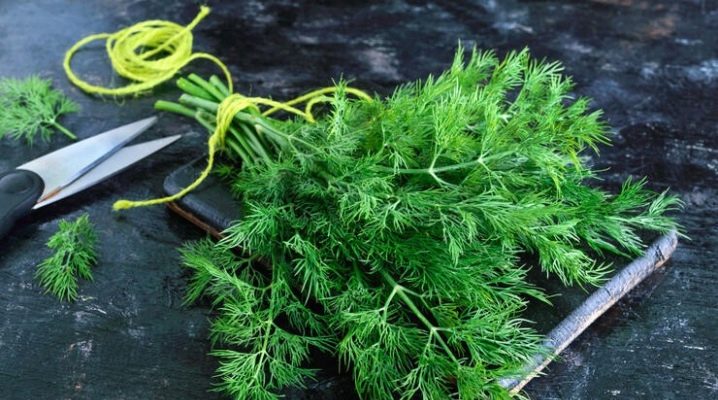
Dill is the most unpretentious herb in the garden. It does not require careful maintenance, it grows almost like a weed. However, even in the case of dill, there are tricks. For example, how to cut it correctly so that the greens continue to grow and be lush - we will talk about this in the article.
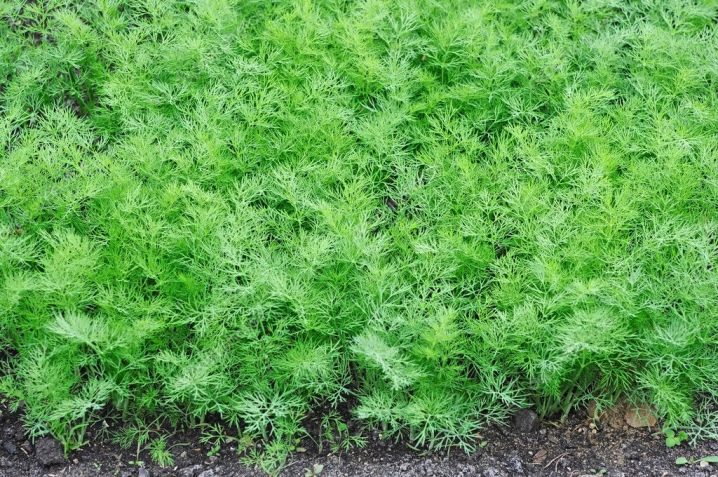
Cut or uproot?
Dill of early ripening varieties is pulled right from the root. If you cut off the greens, the dill will grow back, but quickly go into the arrow. In addition, this is an annual plant, and there is no point in leaving its roots in the ground, except for a few bushes for seeds. In place of the torn plants, you can immediately plant new ones and harvest again after 25-30 days. It is best to sow early varieties of dill not at the same time, but at intervals of one to two weeks. Such dill can be harvested both for drying and for eating in the summer.
Early varieties: "Grenadier", "Dalny", "Umbrella", "Richelieu", "Aurora".
With mid-season varieties, the situation is slightly different. They throw out the flower arrow late, and if you carefully cut the stem, the plant will quickly recover, and new dill will grow in place of the "hemp". At the same time, the greens will remain as tasty and juicy as they were originally.
Mid-season varieties: "Umbrella", "Amazon", "Abundant-leaved".
But the late varieties are better left to grow in the garden as they are, only to pluck the branches from them so that the dill continues to grow further. In the cool conditions of most Russian regions, such varieties begin to bloom only closer to autumn and throughout the season they delight summer residents with fresh greens.
Late varieties: "Alligator", "Kibray", "Dill", "Hoarfrost", "Kutuzovsky".
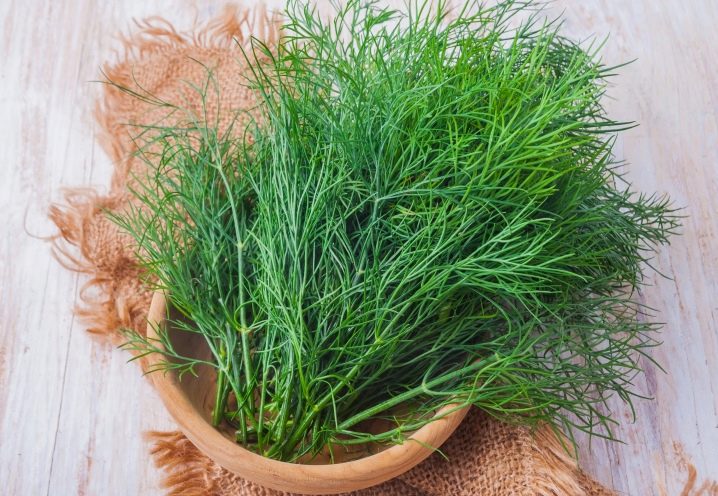
Timing
You can harvest dill as soon as 4-5 leaves appear on the stem... This should be done in the early hours of the day, even before the dew falls, or in cloudy (but not rainy) weather. In the heat, greens quickly wither and deteriorate.
Young dill is considered the most delicious and healthy. As soon as "umbrellas" appear on the dill, it becomes tough and unsuitable for food. At this time, it is time to harvest seeds for sowing next year, as well as stems for winter preservation.
There are two types of dill - umbrella and bush.
The first is the traditional early maturing species. It is not very generous with leaves, but it gives a lot of seeds and fragrant umbrella flowers, which are also used as a seasoning.

Bush dill, on the other hand, is ideal for repeated cutting of greens. Hundreds of leaves grow on one bush, and the plant begins to bloom only after 2.5-3 months. Throughout this time, you can constantly cut off the leaves - instead of them, new ones constantly grow, like on parsley.
The pioneer of bush varieties in Russia was the "Alligator" from the agricultural firm "Gavrish"... Thanks to its unpretentious care, easy availability of seeds and lush greenery, it has been a favorite of summer residents for two decades. You can plant this variety of dill twice a year: in autumn and early spring.
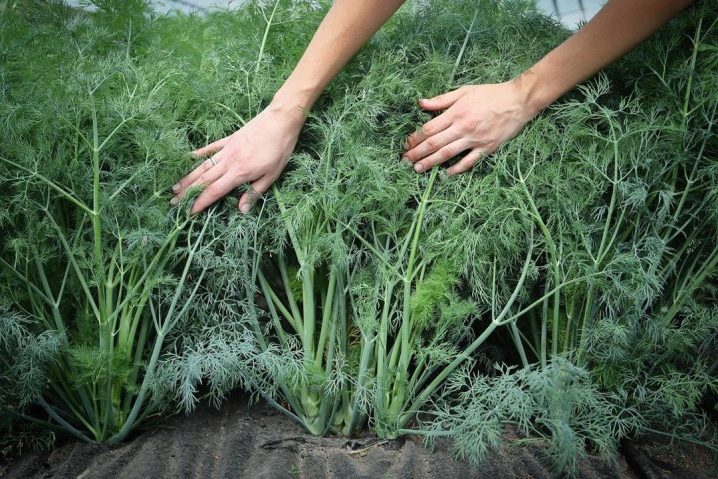
Technology
In the case of bush varieties, the plant must be cut at the rosette stage, leaving the growth point. This is the only way to cut it for greenery several times and get a bountiful harvest from the garden. If you allow it to outgrow, it will begin to bloom, and you will no longer see multiple cutting. It remains only to pinch off the scanty leaves from the stem.
In order to cut the dill as correctly as possible, you need to arm yourself with a garden pruner or scissors and wood ash.
The bush is cut, leaving 2-3 centimeters from the stem and a couple of leaves, and the cut is sprinkled with ash to disinfect the wound. The pruner should be sharp enough not to injure the plant. Soon, after 15-20 days, new shoots will begin to grow from the cut site. Do this regularly, as the leaves grow back.
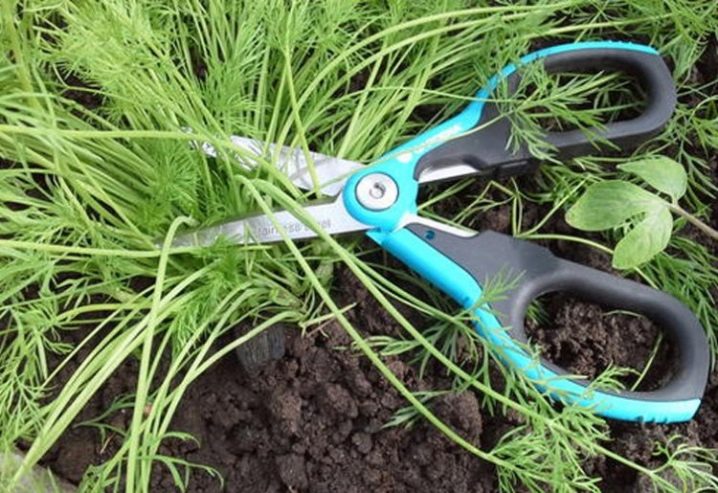
Possible mistakes
Consider some common mistakes inexperienced gardeners make.
- Do not take care of bush dill. Yes, this is an unpretentious crop, but even it needs regular watering, loosening, fertilization and weeding. Otherwise, the dill will not be juicy and fluffy enough.
- Pity the young dill and do not cut the greens until it grows up... In this case, the dill will grow in tall thin bushes and bloom quickly.
- Cut off the growth point... If this is done, the plant will no longer be able to recover and produce a crop.
- Sow the plant in one row. Experienced gardeners plant it "in a heap", several seeds per hole. Then the greens grow faster and more abundantly. And you can also plant dill in zigzag rows so as not to thin out the seedlings once again.
- Do not pinch the plant. If you pinch the umbrella in time, you can multiply the amount of greenery.
- Grow dill in the shade... It is a light-loving plant and needs spacious, open areas with sufficient light. Dill grows poorly in the shade. However, with an abundance of sunlight, it begins to throw out arrows faster, and too bright the sun can burn tender young shoots. Therefore, the best option for a site for planting dill will be partial shade.
- Collect seeds for planting before they darken, or overexpose them until they begin to fall to the ground. Seed collection must be done just in time, after the plant reaches sexual maturity.
- Throw away the stems... These parts of the plant are tough and not suitable for salads, but they can be used for canning vegetables for the winter or dried and chopped as a spice.
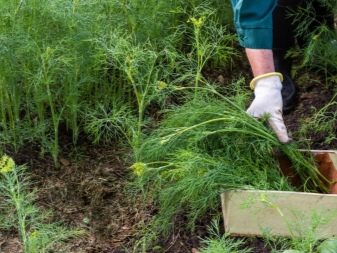

These simple tips and tricks from experts will help you properly cut or uproot dill (depending on the timing of ripening) and avoid unpleasant consequences.














The comment was sent successfully.